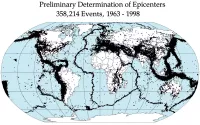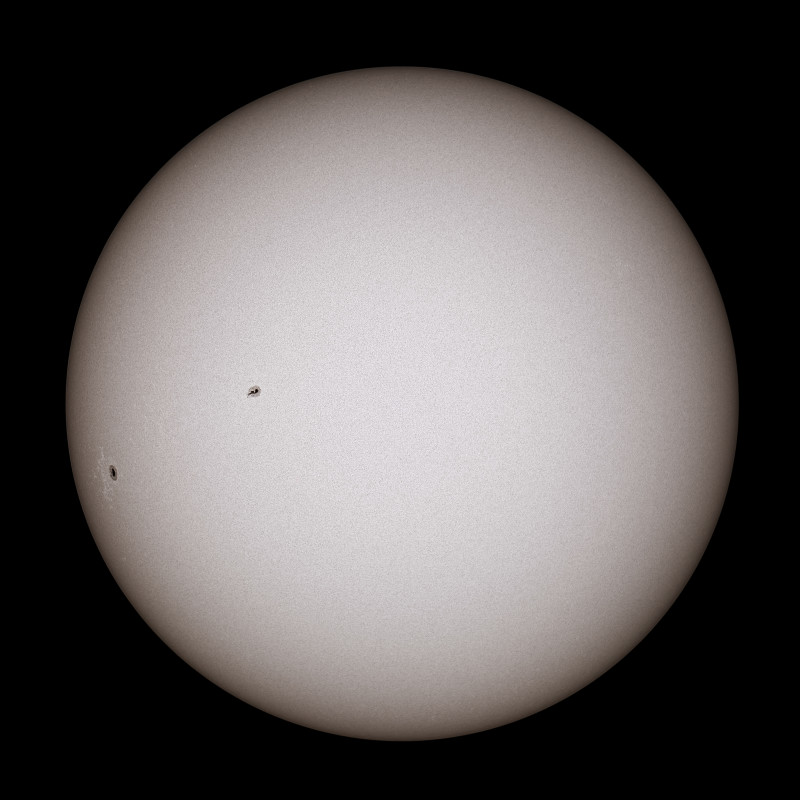Sawtooth National Forest spans over 2.1 million acres in Idaho and Utah. Established in 1905 by President Theodore Roosevelt as the Sawtooth Forest Reserve, it is currently managed by the U.S. Forest Service. A significant portion was designated as the Sawtooth National Recreation Area (SNRA) in 1972, encompassing the Sawtooth, Cecil D. Andrus–White Clouds, and Hemingway–Boulders wilderness areas. The forest is divided into four management units: the SNRA and the Fairfield, Ketchum, and Minidoka Ranger Districts.
May 29, 1905: Sawtooth Forest Reserve Proclamation
On May 29, 1905, President Theodore Roosevelt issued a proclamation establishing the Sawtooth Forest Reserve, marking the initial establishment of what is now Sawtooth National Forest.
June 12, 1905: Establishment of Cassia Forest Reserve
On June 12, 1905, the Cassia Forest Reserve was established, contributing to the eventual formation of the Sawtooth National Forest.
November 5, 1906: Establishment of Raft River Forest Reserve
On November 5, 1906, the Raft River Forest Reserve was established, further shaping the landscape that would eventually become part of the Sawtooth National Forest.
November 6, 1906: Expansion of Sawtooth Forest Reserve
On November 6, 1906, President Roosevelt announced the addition of 1,392,640 acres to the Sawtooth Forest Reserve, significantly expanding its area.
March 4, 1907: Name Change to National Forests
On March 4, 1907, the names of the forest reserves, including Cassia and Raft River, were officially changed to national forests.
July 1, 1908: Split of Lands into Separate National Forests
On July 1, 1908, lands within the Sawtooth Forest Reserve were split into separate National Forests by executive order, leading to the formation of distinct administrative units.
1936: Introduction of National Park Legislation
In 1936, Senator James Pope introduced legislation to establish a national park in the Sawtooths, though the proposal did not gain sufficient support.
1936: Development of Sun Valley Ski Resort
In 1936, Sun Valley was developed as the first destination winter resort in the U.S. with ski slopes on Bald Mountain and Dollar Mountain.
October 12, 1937: Establishment of Sawtooth Primitive Area
On October 12, 1937, the Forest Service officially established the Sawtooth Primitive Area in the Sawtooth Mountains, setting aside a protected region within the national forest.
1937: Designation of Sawtooth Primitive Area
In 1937, the Sawtooth Wilderness was originally designated as the Sawtooth Primitive Area.
1941: Sun Valley Serenade film release
In 1941, the movie "Sun Valley Serenade" was filmed in Sun Valley.
February 9, 1945: B-24 Bomber Crash on February 9, 1945
On February 9, 1945, a B-24 Liberator bomber crashed on Mount Harrison during a training mission, resulting in the death of all nine crew members.
1949: Peak production at Tallman Mine
Production at the Tallman Mine peaked from 1949 to 1954.
July 1, 1953: Addition of Minidoka National Forest
On July 1, 1953, the Minidoka National Forest was added to the Sawtooth National Forest, expanding its boundaries and administrative responsibilities.
1954: Peak production at Tallman Mine
Production at the Tallman Mine peaked from 1949 to 1954.
1960: Legislation for Feasibility Study Introduced
In 1960, Democratic Senator Frank Church introduced legislation for a feasibility study to survey the area for national park status.
July 2, 1961: Ernest Hemingway's Death on July 2, 1961
On July 2, 1961, Ernest Hemingway committed suicide at his home overlooking the Big Wood River.
1963: Bill to Create Sawtooth Wilderness National Park Introduced
In 1963, Frank Church introduced a bill to create Sawtooth Wilderness National Park, primarily encompassing the existing Sawtooth Primitive Area.
1963: Establishment of the Sawtooth Helitack crew
In 1963, the 10-member Sawtooth Helitack crew was established. The crew is based at the SNRA headquarters 7 miles north of Ketchum.
1964: Sawtooth Wilderness
In 1964, The 217,088-acre Sawtooth Primitive Area became the Sawtooth Wilderness (also in the SNRA) as part of the National Wilderness Preservation System under the Wilderness Act.
1965: Joint Report Recommends National Park or Recreation Area
In 1965, a joint report by the Forest Service and National Park Service recommended either a national park or a national recreation area for the Sawtooth region.
April 1966: Introduction of Bills for National Park and Recreation Area
In April 1966, Senator Frank Church introduced two bills: one to establish Sawtooth National Park and another to establish the Sawtooth National Recreation Area (SNRA).
April 1967: Separate Bill Introduced in the House
In April 1967, Congressman George Hansen introduced a separate bill in the House of Representatives regarding the Sawtooth area.
1968: Discovery of Molybdenum Deposit
In 1968, the American Smelting and Refining Company (ASARCO) discovered a molybdenum deposit at the base of Castle Peak in the White Cloud Mountains.
1970: Governor Samuelson's Support for ASARCO Mine
In 1970, Republican Governor Don Samuelson voiced his support for the ASARCO mine, despite growing opposition to the project.
March 1971: Introduction of SNRA Legislation
In March 1971, Idaho's congressional delegation introduced legislation to create the Sawtooth National Recreation Area (SNRA).
August 22, 1972: Designation of Sawtooth National Recreation Area
On August 22, 1972, a portion of the Sawtooth National Forest was officially designated as the Sawtooth National Recreation Area (SNRA), encompassing the Sawtooth, Cecil D. Andrus–White Clouds, and Hemingway–Boulders wilderness areas.
September 1, 1972: SNRA Dedication Ceremony
On September 1, 1972, the Sawtooth National Recreation Area (SNRA) was officially dedicated in a ceremony held on the shores of Redfish Lake.
1972: Fairfield Ranger District merger
In 1972, the Fairfield Ranger District merged with the Shake Creek Ranger District to form the present-day Fairfield District.
1972: Part of National Wilderness Preservation System
In 1972, the Sawtooth Wilderness became part of the National Wilderness Preservation System under the Wilderness Act.
1977: Andrus Becomes U.S. Interior Secretary
In 1977, Cecil Andrus, a supporter of preserving the forest, began serving as U.S. interior secretary in the Carter Administration.
1984: Pale Rider Filmed
In late 1984, Clint Eastwood's film "Pale Rider" was filmed in the SNRA, mostly in the Boulder Mountains.
1985: Pale Rider Filmed
In 1985, Clint Eastwood's film "Pale Rider" was filmed in the SNRA, mostly in the Boulder Mountains.
1986: Idaho license plates depicted Sawtooths
Beginning in 1986, Idaho license plates depicted a basic mountain range that was supposed to represent the Sawtooths.
1987: 1987 forest plan
In 1987, the forest plan did not recognize fire as an ecosystem process or as a tool for ecosystem management.
1989: Fires Between 1989 and 1998
Between 1989 and 1998, there were on average 50 fires per year, with 58 percent of them caused by lightning.
1990: Decline in Sockeye Salmon Population
Between 1990 and 1998, a total of 16 adult fish returned to Redfish Lake, indicating a critical decline in the sockeye salmon population.
1991: Idaho license plates revised
In 1991, the Idaho license plates depicting the Sawtooths were revised to more accurately represent the mountains. The Idaho Division of Motor Vehicles also created a license plate depicting the SNRA.
1992: Black Pine Mine resumed gold production in 1992
The Black Pine Mine resumed gold production in 1992.
1995: Start of Large Mountain Pine Beetle Infestation
In 1995, a large infestation of mountain pine beetles began, affecting forest groves in the Sawtooth National Recreation Area (SNRA).
1998: Fires Between 1989 and 1998
Between 1989 and 1998, there were on average 50 fires per year, with 58 percent of them caused by lightning.
1998: Decline in Sockeye Salmon Population
Between 1990 and 1998, a total of 16 adult fish returned to Redfish Lake, indicating a critical decline in the sockeye salmon population.
October 16, 2002: Consolidation of Ranger Districts
On October 16, 2002, the Burley and Twin Falls Ranger Districts of Sawtooth National Forest were consolidated into the Minidoka Ranger District.
2003: End of Mountain Pine Beetle Infestation
In 2003, the large infestation of mountain pine beetles that had started in 1995 came to an end, leaving significant impacts on the forest.
July 29, 2004: Memorial Service Held on July 29, 2004
On July 29, 2004, a memorial service was held and a plaque was permanently installed honoring the crew who died in the B-24 Liberator bomber crash.
2007: Castle Rock Fire in 2007
In 2007, the Castle Rock Fire burned 48,000 acres (19,000 ha) of the Smoky Mountains near Ketchum.
2007: Mount Harrison fire lookout tower last staffed in 2007
Mount Harrison fire lookout tower was last fully staffed in 2007.
2008: First Salmon Season in 31 Years
In 2008, the first salmon season in 31 years was held for chinook salmon in the upper Salmon River.
2010: Alpha and Omega setting
In 2010, the SNRA was one of the settings of the 3-D computer-animated film Alpha and Omega.
2010: Sawtooth Fault Discovery
In 2010, the Sawtooth Fault, a 40-mile (65 km) long east-dipping normal fault that runs along the base of the Sawtooth Mountains, was discovered and mapped.
2011: Increase in Adult Fish
In 2011, 1100 adult fish returned to Redfish Lake.
2012: 2012 forest plan
In 2012, the forest plan was revised to recognize fire as an ecosystem process and as a tool for ecosystem management.
August 2013: Beaver Creek and Kelley Fires in August 2013
In August 2013, the Beaver Creek Fire and the Kelley Fire were both ignited by lightning and burned 111,490 acres (45,120 ha) and 17,346 acres (7,020 ha), respectively, of the Fairfield and Ketchum ranger districts. Another lightning-caused fire, the McCan Fire, burned 23,389 acres (9,465 ha) of the Fairfield Ranger District and other lands north of Fairfield in 2013.
2014: Increase in Adult Fish
In 2014, approximately 1400 adult fish returned to Redfish Lake, up from 1100 in 2011.
August 4, 2015: Passage of Sawtooth National Recreation Area and Jerry Peak Wilderness Additions Act
On August 4, 2015, Congress passed the Sawtooth National Recreation Area and Jerry Peak Wilderness Additions Act.
August 7, 2015: Sawtooth National Recreation Area and Jerry Peak Wilderness Additions Act
On August 7, 2015, President Barack Obama signed the Sawtooth National Recreation Area and Jerry Peak Wilderness Additions Act to create three wilderness areas.
2015: Wilderness Designations and National Monument Considerations
Prior to the 2015 wilderness designations, the White Cloud and Boulder mountains were part of the largest unprotected roadless area in the United States outside of Alaska, and the area had been studied for possible protection as a national monument.
March 23, 2018: White Clouds Wilderness Renamed
On March 23, 2018, the White Clouds Wilderness was renamed the Cecil D. Andrus–White Clouds Wilderness in honor of Andrus and his efforts to protect central Idaho.
2018: Forest Headquarters Move to Jerome
In 2018, the Sawtooth National Forest headquarters moved to Jerome after being headquartered in Twin Falls for 32 years.
March 31, 2020: Earthquake in March 2020
On March 31, 2020, an earthquake measuring 6.5 on the moment magnitude scale occurred. The quake had a maximum Mercalli intensity of VII (Very strong).
August 2020: Aftershocks in August 2020
Aftershocks from the March 31, 2020 earthquake continued through early August 2020.
Mentioned in this timeline
The United States of America is a federal republic located...

Barack Obama the th U S President - was the...

Clint Eastwood is an iconic American actor and film director...

An earthquake is the shaking of the Earth's surface caused...

The Sun the star at the center of our Solar...

Twins are offspring resulting from the same pregnancy categorized as...
Trending

6 months ago Edward Jones Expands Roster, Maintains Growth Target; Advisors Qualify for Recognition

Jon Gruden is a former American football coach and media personality He achieved significant success as the head coach of...
Lauralee Bell is an American actress recognized for her role as Christine Blair in the daytime soap operas The Young...
11 minutes ago Oregon Ducks' Defense Favored in USC Game; Betting Line Movement and Predictions

1 hour ago Dustin Johnson Attributes Winless Season to Split, Updates LIV Golf Teammates

3 days ago Cambridge Dictionary names 'parasocial' word of the year, inspired by Swifties and AI.
Popular

XXXTentacion born Jahseh Dwayne Ricardo Onfroy was a controversial yet...

William Franklin Graham III commonly known as Franklin Graham is...

Cristiano Ronaldo often nicknamed CR is a Portuguese professional footballer...

Candace Owens is an American conservative political commentator and author...

Michelle Obama is an American attorney author and former First...

Marjorie Taylor Greene known as MTG is a far-right American...